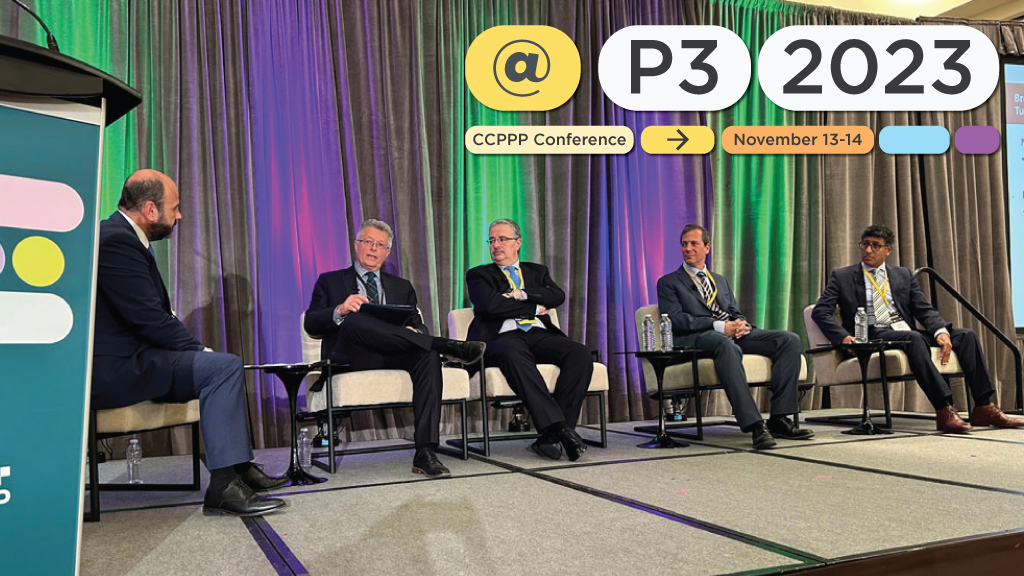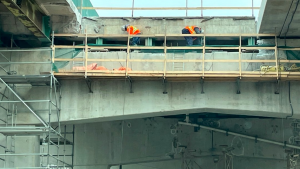The use of the P3 model on transit projects has been scrutinized in the past few years, but in a session at the P3 conference in Toronto, the team working on the advance tunnelling for the Eglinton Crosstown West Extension talked about how the model can be successful.
The session was billed Seeing the Light: Tunnelling Towards Success on the Eglinton Crosstown West Extension.
According to the team, the elements that contributed to the success were the ambitious construction schedule, an accelerated design schedule, a collaborative and co-operative strategy among all parties and a series of incentives upon completion of major project milestones.
âSchedule was the main challenge in this project,â said Jose Luis Arévalo, tunnels global lead at TYPSA. âThis was a design-build-finance project. In this environment you can expect issues with the design, you can expect issues with the permits, utilities, geotechnical issues.
âTwo incentives of a significant amount of moneyâ¦were absolutely a key part of our strategy and approach and something that was a goal that we needed to achieve.â
West End Connectors, a joint venture consisting of Dragados ºÚÁϳԹÏÍø, AECON and Ghella ºÚÁϳԹÏÍø, was awarded the contract in May 2021. Shovels were in the ground a month after financial close.
âIt was clear to all of us on the team that we needed to advance on the design if we wanted to abide with the strict schedule,â Arévalo explained.
The team was appointed the preferred proponent on one of the contracts in March. The contract was awarded in May. Then in February 2022 the team achieved its first milestone.
âThe first incentive payment, the first TBM (tunnel boring machine) was fully assembled and this happened ahead of schedule,â Arévalo said.
The second milestone was achieved in April 2022, the excavation of the first 50 metres of the eastbound tunnel.
âEighteen months after contract award, both tunnels had reached already the 1.5 kilometres mark,â he said.
Currently both tunnels are past the four-kilometre mark.
In terms of lessons learned, he said collaboration and co-operation among the team, which included a mix of Canadian and international experts, was key.
âWe shifted from a complete risk transfer approach to mutually co-operative geotechnical and schedule risk sharing and this created good will,â he said.
Marco Giorelli, area manager for ºÚÁϳԹÏÍø with Ghella, talked about the importance of the incentives on the project.
âThe first incentive, $20 million was set by the owner Infrastructure Ontario and Metrolinx almost 11.5 months since the financial close,â he pointed out. âIt was an all or nothing type of incentive. We had to meet the date or we didnât get paid. We reached the incentive exactly two months in advance of the contractual date. The first incentive had to do with full assembly of the first TBM.â
The second incentive, which was to bore 50 metres in the first tunnel, was set by the owner at almost 13 months from financial close.
âIf we were to meet the date on the first day we would get 100 per cent of another $20 million,â he explained.
âThen every day for the next three months the incentive decreased until you reach zero. We reached that incentive a month-and-a-half before the first day. We were able to bring home both incentives.â
The biggest element was that the team never stopped, he said.
âThe moment we presented the tender package early in the first week of January, we just kept working. We didnât wait around to become the preferred bidder,â Giorelli said. âWe proceeded with risk. We invested some money. We had no way to know if we would get it back.â
They were identified as a first negotiations proponent in March.
âBy the time we became preferred proponent and then we were awarded the contract in May 2022, we had gained four months on the schedule essentially not on all the activities but on the early activities that were necessary so we could try to achieve the two incentives.â
One of the main activities they continued with was the detailed design, especially the tunnel geometry. They also kept talking to potential subs and suppliers and made agreements.
âWe had a goal that we had to close 90 per cent of those agreements one month before we reached financial close,â Giorelli said.
They also made a deal with their partners.
âWe entered into some agreements where we shared with some of the suppliers, the subcontractors a potential piece of the incentive, if we were to get it,â he said.
âOur approach was, I like to call it, calculated risk instead of gamble. It sounds better.â
Overall, he said he had mixed feelings on the incentive program.
âItâs a scheme that could reward a contactor that delivers,â he said. âAt the same time, itâs a scheme that promotes the team of contractors that has a high tolerance of risk and that could be not necessarily good.
âOn our job on Eglinton, our incentives were set in stone. It didnât matter if it was your fault, not your fault.
âIf you did not get those dates you would not get the incentive. In the future perhaps if incentives are adopted there should be some sort of extenuating circumstances where if itâs not my fault, I donât get punished.â
Follow the author on Twitter .










Recent Comments
comments for this post are closed